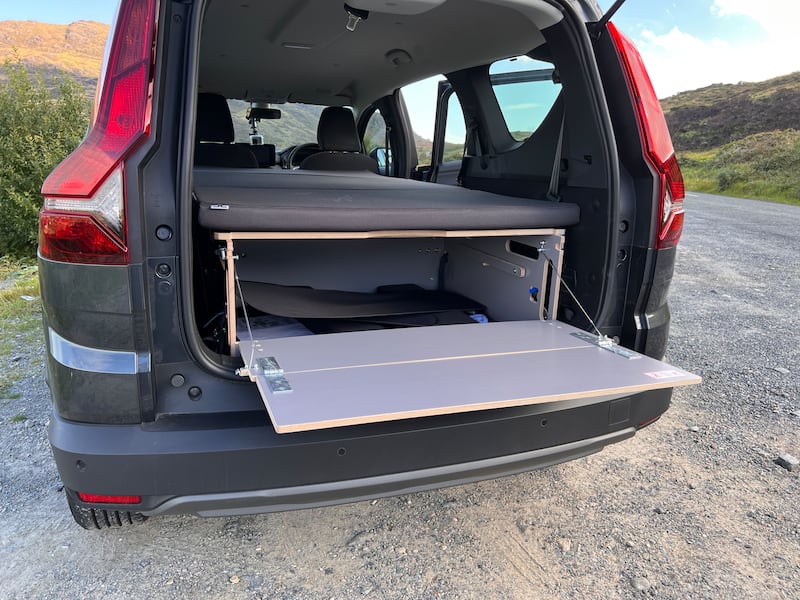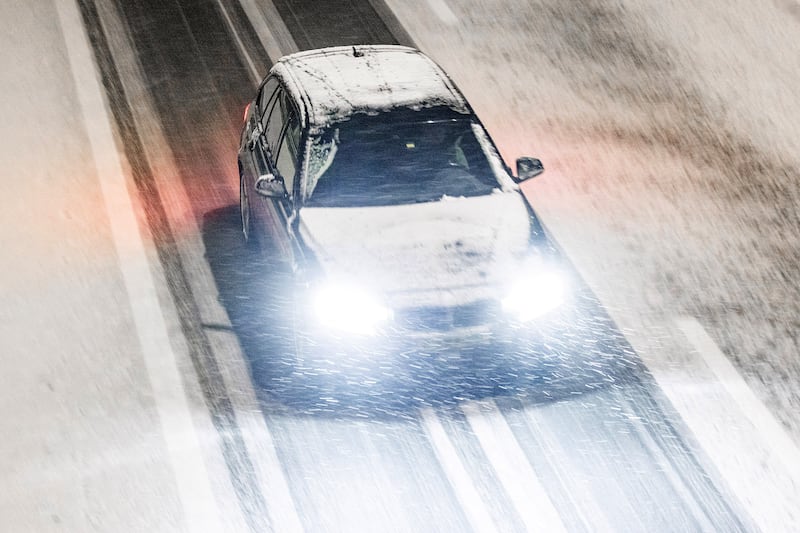The Dacia Jogger is already well and truly used to slaying the odd giant. It even managed to steel its way through a Euro NCAP safety rating that would have floored a lesser car (TL:DR – it is a generally safe car, but there’s nuance to that).
Now, though, Dacia is setting its sights high. Very high. Well, how exactly high depends on whether or not the Volkswagen California parked next to it has extended its electrically-deployed roof or not, but pretty high nonetheless. Dacia wants to be considered as a truly outdoors-y brand, and actually intends in the coming years to position itself as a more affordable rival to Jeep.
The brand’s off-road buggy concept – the Manifesto – sadly won’t morph into some kind of Jeep Wrangler rival, but it will influence and inform the gentle changing of Dacia’s image, from a brand that you bought if you just wanted a bargain, to one that you buy for a bargain and get some trendy check-shirt-and-Timberland-boots image thrown in as well.
To help bolster that image, Dacia has taken the Jogger and turned it into a camper van. Now, creating a camper van is generally a process fraught with expense. Take a look at the California sitting next to our test Jogger, for instance. The minimum cost for a California camper is €66,880 compared with the base €35,245 price for the Transporter 6.1 van on which it’s based.
The Jogger? Well, the basic Jogger costs €25,040 and our test car, in Extreme SE spec, costs €29,085 including metallic paint. To turn it into a camper, you simply hand over €1,490 to your Dacia dealer, and they will give you a “Sleep Pack”. This is a box, one that weighs about 50kg, and which clips on to the same rails used by the third row of seats in the Jogger. Simply take out those seats, leave them at home, and pop in the Sleep Pack.

It’s made of light-but-strong plywood, and incorporates a 220-litre storage area underneath the sleeping bit. That’s tiny compared with the Jogger’s usual 745-litre boot, but it’s enough for some squashy bags, a pillow and a sleeping bag.
To put the bed to use, you fold down the back seats, and then spend about five to 10 minutes extending the base of the bed, folding out some side panels, and unrolling the slim mattress. It’s basically an in-car futon, and in theory there’s space for two to sleep on it.
That’s a touch theoretical – anyone sharing it with me might find things a touch tight – but it doesn’t leave you squashed up against the ceiling. The Jogger isn’t the tallest car in the world (whisper it, but it’s more estate than SUV) but there’s about 600mm of room between the base of the bed and the roof liner, so it’s comfy enough. Getting in there is a bit tricky – I found the best way was to go in via the front seats and clambering through the gap between them, but I’m willing to hear arguments on other routes.
[ Jeep Grand Cheroke review: A luxury SUV worth waiting forOpens in new window ]
Once there, it’s pretty comfy. Okay, so the relatively slim mattress means that it’s not the softest experience going, but with the simple clip-in screens keeping the world outside at temporary bay, I slept in perfect peace.
Would I have slept better in the California, though? Well, thankfully that one parked next to me had travelled with me in convoy to a major history festival, held on the edge of the Silverstone race track in England. Yes, I know it’s nerdy to go and camp at a history festival but . . . have you met me? Being as I knew the owner, a night in the California, offering a direct comparison within-24 hours to the Jogger, was easily arranged.
Driving to the event, the Jogger is pretty decent. The front seats could do with being slightly larger and squashier for long runs, and the 1.0-litre engine needs a drop to fifth gear for long inclines, but it’s perfectly fine and impressively free from squeaks and rattles in the sleeping area. The California is, of course, smoother and has much better seats. Overall economy isn’t wildly divergent – we averaged 6.1 litres per 100km in the petrol Jogger; 7.5-litres per 100km in the diesel California.
Once parked up and rigged for sleep, it’s obvious that the California is operating at another level of sophistication, as befits its price. The seats are upholstered in a mixture of leather and soft velour, whereas the Dacia’s are covered in a simple, sturdy cloth. The California has room to stand up inside (once you’ve extended the roof-tent bit) and has faux-wooden floors. It has cupboards, a fridge, a two-burner gas hob, an on-board water tank to feed the small sink, and built-in heating. It even has an upstairs.
I chose to sleep downstairs, folding the Cali’s back seats flat to form, in conjunction with a small panel behind them, a generously-sized bed. It also has its own slim, flip-out mattress which goes over the upholstered seats to form a deeper, comfier version of the Dacia’s futon. With the integral blinds pulled down and the mood lighting turned down, I turned in.
Reader, I slept. I slept well. I made sleeping babies look restless and fidgety. However, did I sleep that much better than I did in the Jogger? Not especially, no.
Okay, comparing these two cars is ultimately futile – no one is going to be cross-shopping them, and the price differential renders one an apple and the other an orange. The California is a fabulously well-thought out machine, reflecting the decades of experience Volkswagen has in building campers. Aside from the lack of, ahem, bathroom facilities, it’s like bringing your home with you on holiday.
[ Has BMW over-gilded the M2′s lily?Opens in new window ]
The Jogger is, necessarily, much more basic. When Dacia says it wants to be an outdoors-y brand, that extends to dressing and undressing (unless you’re very, er, flexible) and all meals will have to be cooked, eaten and cleaned up after in the nearest river or at a standpipe. Don’t go looking for any neatly integrated picnic tables or deck chairs, because they’re not there, although the lid of the luggage box does actually fold out into a useful small table or shelf (not a seat, though – it can only manage 15kg).
However, there is a victory for the Jogger here. I slept as well in it as I did in the California. Smaller, more basic and more in need of you meeting it half way, the Jogger may be, but at the most basic job of a camper van – the sleeping bit – it can match the big, pricey Volkswagen.
Does that make it a better car overall? No, don’t be daft. The California is still the camper van king, the Rolls-Royce of mobile beds. But the Jogger is playing a heck of a joker card . . .












